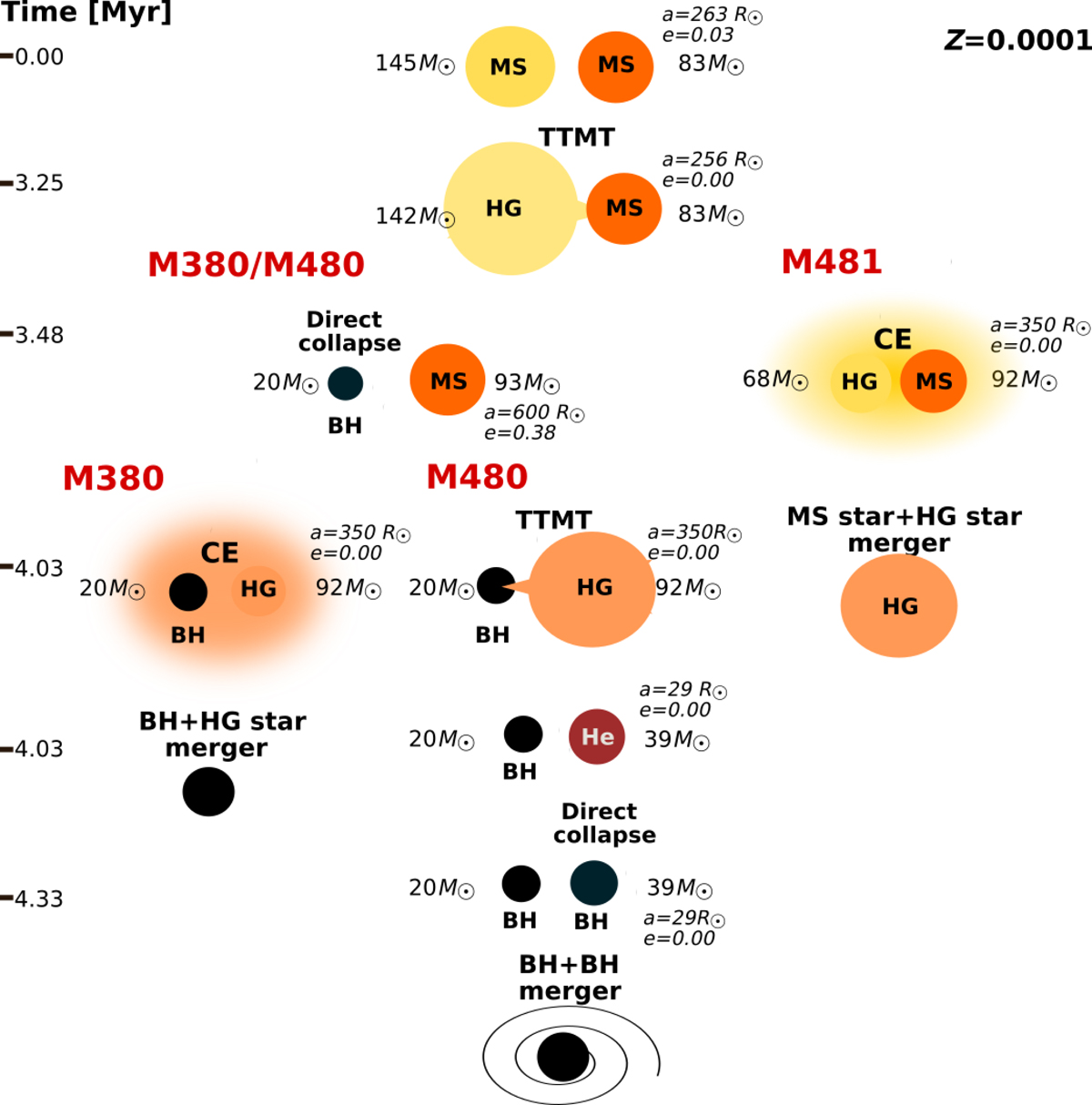Fig. 10.

Typical local (z ≈ 0) BH-BH mergers formation scenarios for model M480.B, together with the alternative evolution of the same system in models M380.B and M481.B. For all models, we begin with the same initial conditions, massive system of 145 M⊙ primary and 83 M⊙ secondary on the orbit of 263 R⊙ and with metallicity Z = 0.0001. In all scenarios, the primary initiates TTMT when it leaves main sequence and begins to expand in thermal timescale during the HG phase. When TTMT finishes, in case of models M380.B and M480.B secondary looses envelope. A BH with stripped helium core companion on the orbit of 350 R⊙ is left. In model M481.B due to modified condition for switch between the TTMT and nuclear-timescale stable MT, and the “safety” condition (read Sect. 3.2) when TTMT ends, the system goes through the CE phase. As the donor is a HG star, the CE ends with the system merger leaving behind an unevolved single star. After 3.3 Myr, in models M380.B and M340.B, the primary finishes evolution and collapse to a 20 M⊙ BH remnant. Next, after the secondary leaves main sequence, due to more restricted conditions for CE development, in cases of model M480.B system goes through TTMT instead of CE phase as in standard M380.B model. At the onset of TTMT, the secondary (donor) is over four times more massive than a BH companion. During the TTMT, the donor star looses ∼60 % of its mass together with the system orbital angular momentum. This leads to the significant orbit tightening by a factor of ∼12. Efficient orbital angular momentum loss during TTMT allows for the subsequent formation of 20 M⊙ BH and 30 M⊙ BH systems to merge in Hubble time. In the scenario for M380.B, the highly unequal mass system enters the CE phase with the HG donor. The binary system does not survive CE phase leaving behind a single BH. The “He” in the diagram stands for stripped helium core.
Current usage metrics show cumulative count of Article Views (full-text article views including HTML views, PDF and ePub downloads, according to the available data) and Abstracts Views on Vision4Press platform.
Data correspond to usage on the plateform after 2015. The current usage metrics is available 48-96 hours after online publication and is updated daily on week days.
Initial download of the metrics may take a while.


